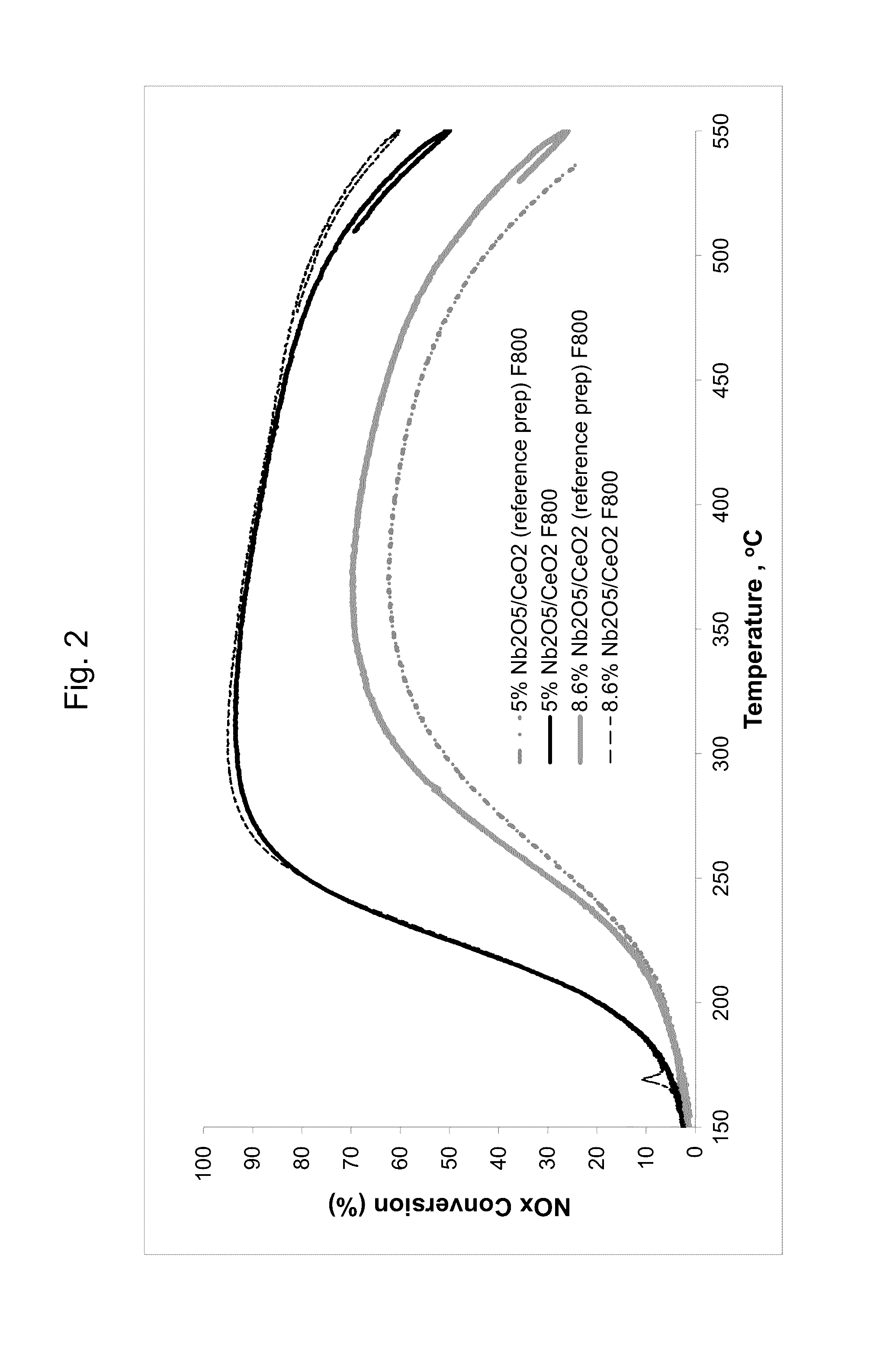Selective catalytic reduction processes using doped cerias
a catalytic reduction and selective technology, applied in separation processes, physical/chemical process catalysts, metal/metal-oxide/metal-hydroxide catalysts, etc., can solve the problems of reducing the efficiency and generating backpressure, so as to achieve the no2. , the effect of reducing the size, complexity and cost of the exhaust treatment system
- Summary
- Abstract
- Description
- Claims
- Application Information
AI Technical Summary
Benefits of technology
Problems solved by technology
Method used
Image
Examples
example 1
Preparation of Niobia-Doped Ceria (3.2 wt. % Nb2O5)
[0089]Ammonium niobate(V) oxalate (21% Nb, 1.06 g, 2.4 mmol Nb, equivalent to 0.32 g Nb2O5) is dissolved in water (6 mL) with stirring and gentle warming. High-surface-area ceria (9.68 g) is added, and the mixture is stirred. The pore volume of the ceria is slightly exceeded so the sample is stirred / warmed to dryness on a hotplate. The sample is further dried in an oven at 105° C. Portions of the sample are calcined (“fired”) at 500° C. for 2 h or at 800° C. for 4 h (10° C. / min ramp rate).
example 2
Preparation of Niobia-Doped Ceria (5.0 wt. % Nb2O5)
[0090]The procedure of Example 1 is generally followed using ammonium niobate(V) oxalate (3.33 g, 7.52 mmol Nb, equivalent to 1.0 g of Nb2O5), ceria (19 g), and water (12 mL).
example 3
Preparation of Niobia-Doped Ceria (8.6 wt. % Nb2O5)
[0091]The procedure of Example 1 is generally followed using ammonium niobate(V) oxalate (2.86 g, 6.47 mmol Nb, equivalent to 0.86 g of Nb2O5), ceria (9.14 g), and water (6 mL).
[0092]In Comparative Examples 4-6, the procedure of PCT Int. Publ. No. WO 2012 / 004263 (Rhodia) is generally followed to produce catalysts in which ceria is formed in the presence of niobia. Based on the preparation method, the catalysts should have a core of niobia surrounded by a ceria shell.
PUM
| Property | Measurement | Unit |
|---|---|---|
| temperature | aaaaa | aaaaa |
| temperature | aaaaa | aaaaa |
| wt. % | aaaaa | aaaaa |
Abstract
Description
Claims
Application Information
 Login to View More
Login to View More - R&D
- Intellectual Property
- Life Sciences
- Materials
- Tech Scout
- Unparalleled Data Quality
- Higher Quality Content
- 60% Fewer Hallucinations
Browse by: Latest US Patents, China's latest patents, Technical Efficacy Thesaurus, Application Domain, Technology Topic, Popular Technical Reports.
© 2025 PatSnap. All rights reserved.Legal|Privacy policy|Modern Slavery Act Transparency Statement|Sitemap|About US| Contact US: help@patsnap.com



